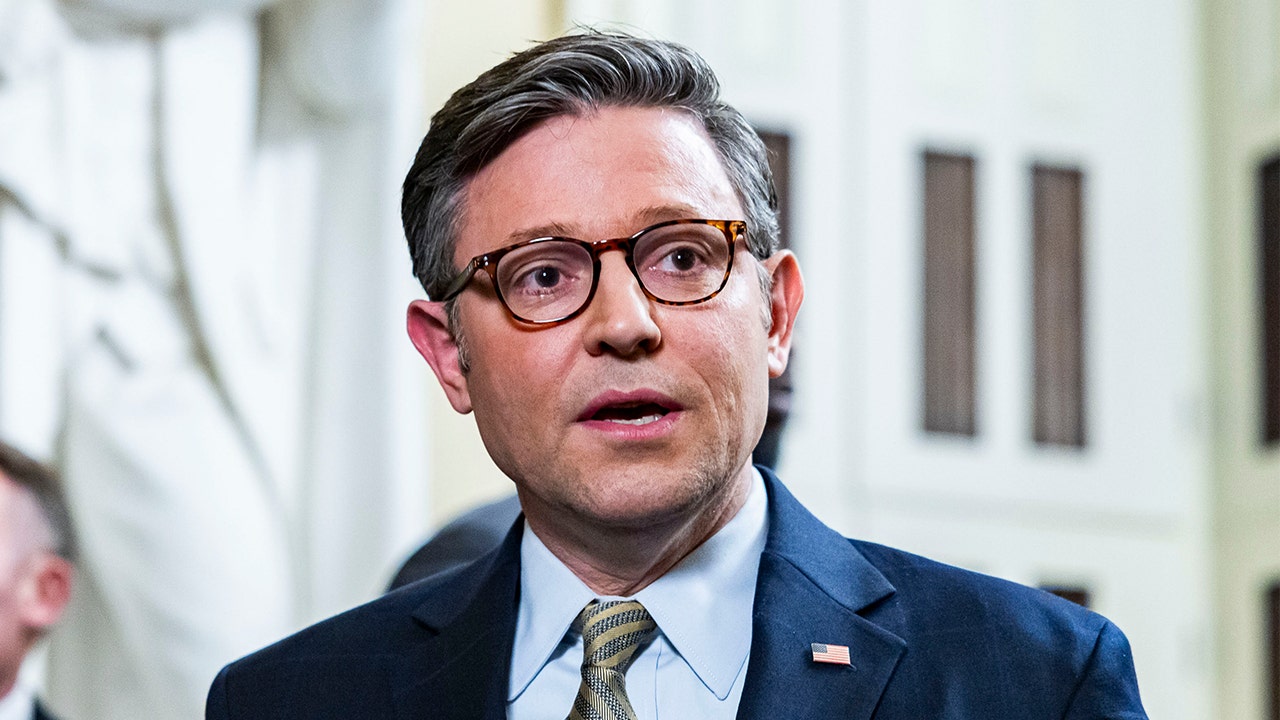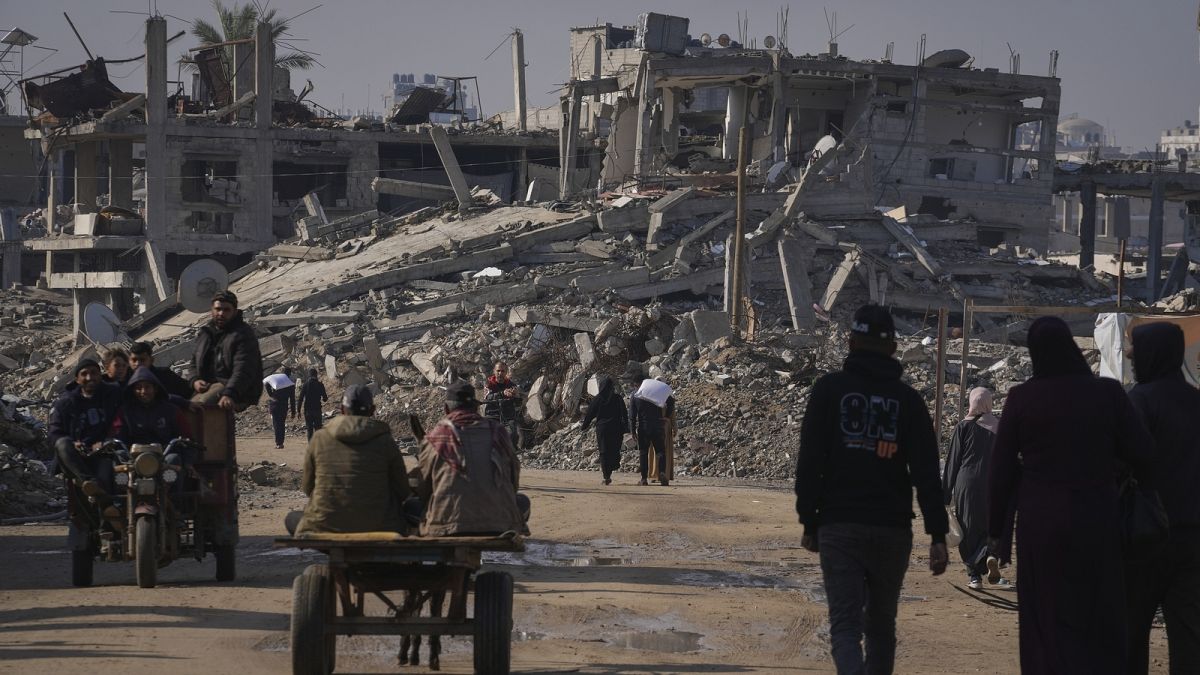Louisiana
A road trip from Louisiana to Mississippi: Crawfish, beignets and beaches

The server at Suire’s Grocery was apologetic. They had just finished their lunch period and only had sandwiches left. Would that do? But before we could register a response a voice piped up from behind the hatch in the servery, insisting they had one last hot plate to offer. It was boudin and rice in gravy, take it or leave it.
Gratefully, we agreed to take it. We had hoped for their “legendary” Turtle Sauce Piccante, or Catfish Po’boy, or something else from their daily chalkboard of Cajun delicacies, all redolent of 300 years of southern Louisiana’s cultural hot-pot. But boudin and rice sounded intriguing. “What’s in it?” we asked, naively. The person next in line piped up. “Best not to ask,” she insisted. “But it’s good eatin’ all the same.” She wasn’t wrong.
Traditional boudin is a sausage made from pork meat, rice, vegetables and seasonings that vary from kitchen to kitchen and can include liver and heart, hence the whispered advice to stay ignorant of the recipe. We took the plunge and savoured a deeply flavourful plateful. The sausage had the consistency of pate and the thick gravy added a delectably gooey texture that hinted of bourbon, tabasco and something essentially earthy.
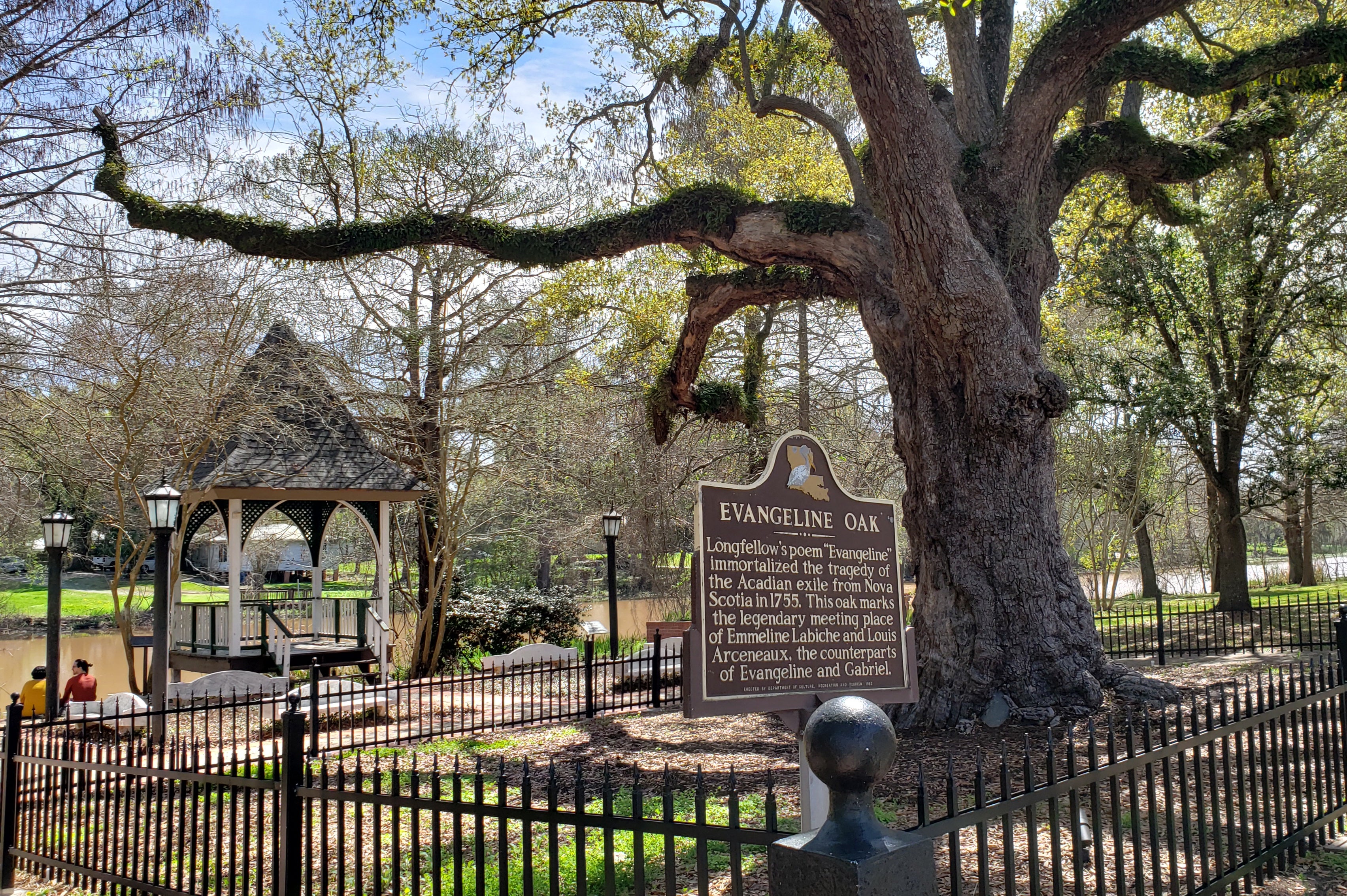
Read more: A fiery new food tour across America’s Deep South
Family-run Suire’s, in the rural town of Kaplan, was exactly what we’d hoped to encounter as our year-long RV circumnavigation of the US reached its 11th month. Southern Louisiana held the promise of experiences beyond the usual tourist trail, and we were soon immersed in a world of historical intrigue, ancient waterways, crawfish farms and fabulous food – the legacy of the 18th-century French Catholic expulsion from maritime Canada.
Here, along the Cajun Corridor Byway, we explored St Martinville, founded in 1765 and the setting for Longfellow’s epic poem “Evangeline”. We continued to the shrimping centre of Morgan City and White Lake Wetlands Conservation Area, where we were advised to keep an eye out for alligators. We also discovered Hebert’s Meats and dined on superb etouffee, jambalaya and more boudin.
Heading further east brought us to history-rich Baton Rouge via the 18-mile marvel of Atchafalaya Basin Bridge, an extensive causeway across America’s largest river swamp. From the elevated seats of our 36-foot-long Winnebago, we enjoyed a grandstand view of this million-acre wetland that is effectively the Mississippi’s dramatic overflow basin.
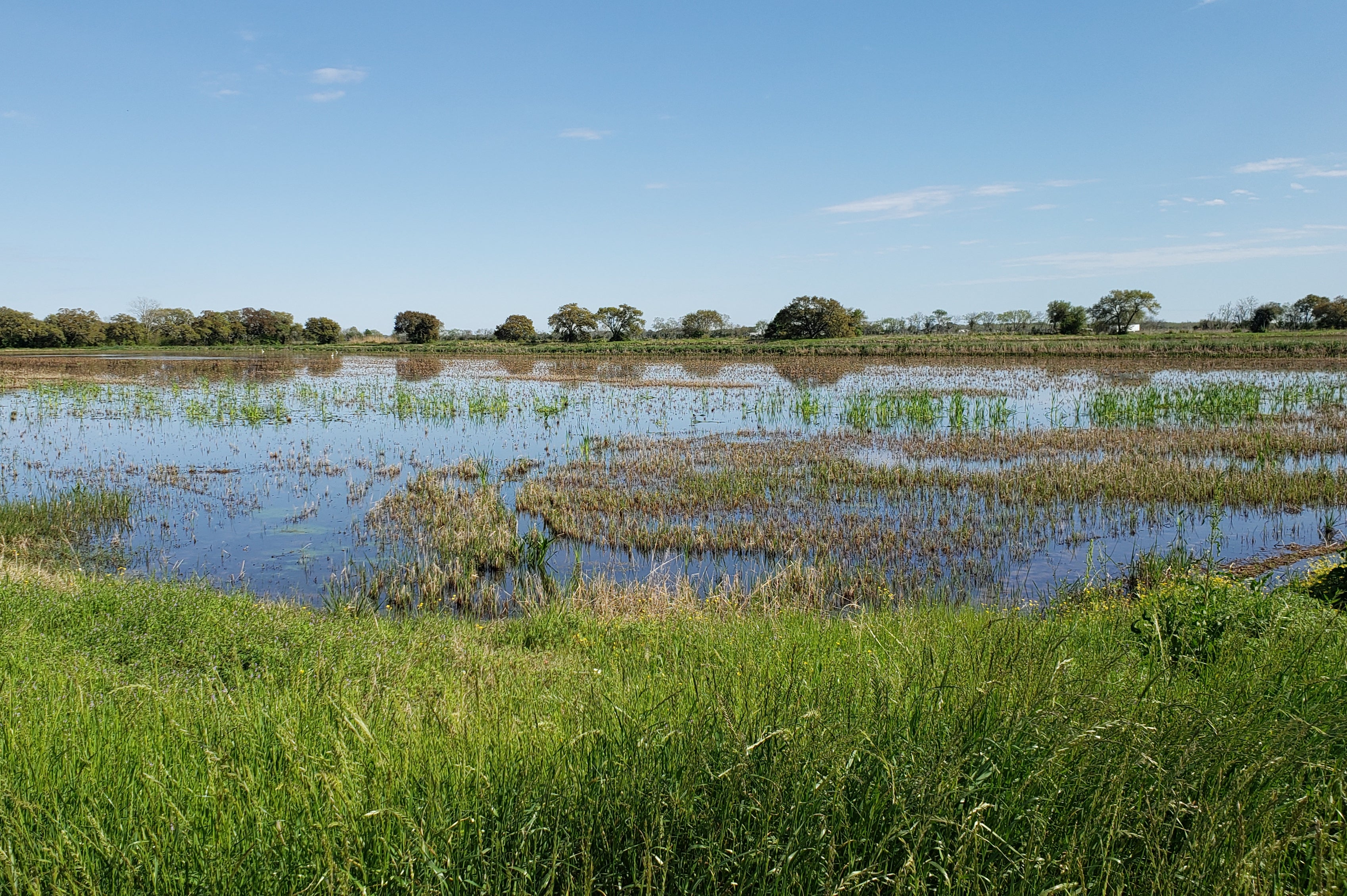
We checked in to the chic Tiger’s Trail RV Resort, an adjunct to the neighbouring L’Auberge Casino and packed with amenities like a swimming pool, lazy river feature, laundry and pickleball courts, plus the friendliest camp hosts we’d yet met. Fully in tune with the campground camaraderie we had come to expect, the Tiger’s Trail folks made us feel part of their family with a friendliness that was genuine and unmistakable.
Baton Rouge introduced us to the massive Louisiana State University campus with its stunning 102,000-seat American football stadium and an urban profile packed with modern art and period architecture, including its neo-Gothic Old State Capitol building, St Joseph Cathedral and Magnolia Mound Plantation House. The city’s oldest neighbourhood, the Civil War-ravaged Spanish Town, offered a collection of period homes, as well as the nearby temptations of Cecilia Creole Bistro, where we sampled fried oysters and alligators.
Resorting to our trusty tow car, we ventured in search of the rural towns and backwaters that reputedly make up 80 per cent of the state. Here, we could drive part of the Great River Road National Scenic Byway, a homage to the mighty Mississippi, studded with landmarks from the plantation era, notably Houmas House with its stately mansion and gardens.
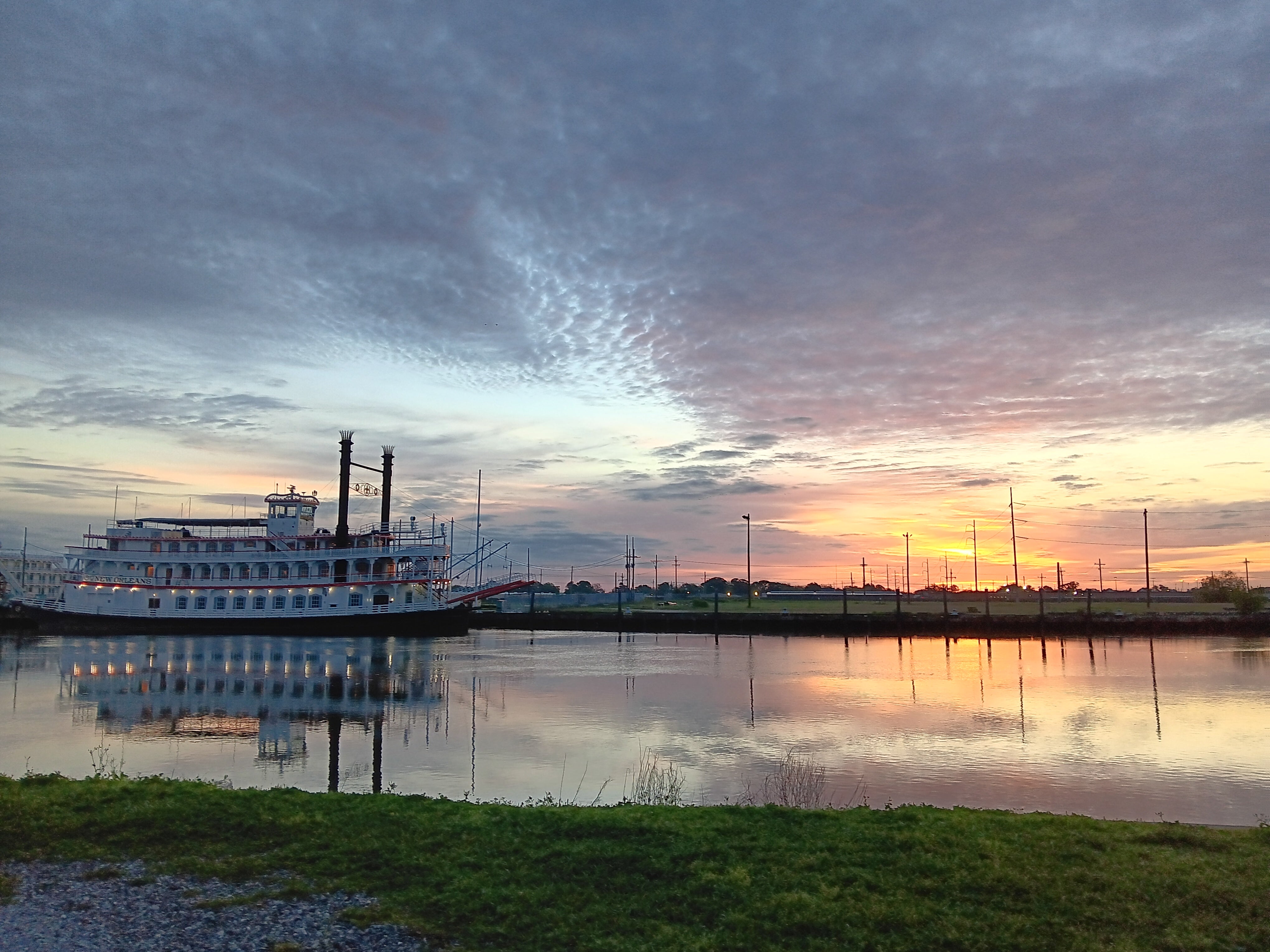
The classic waterway of Bayou Manchac took us back into the 19th century, and the Southern Swamp Byway took us further still, with a timewarp journey into backroads where gators and turtles were often the only living creatures and crawfish farms were commonplace. Back in the 1940s, rice farmers realised their flooded rectangular ponds were the perfect breeding ground for crawfish, which thrived on the rice stalks, and promptly set up a two-for-the-price-of-one industry that supplies 100 million pounds per year of this delectable freshwater crustacean.
This symbiosis of backwater industry and dinner-table staple reached its zenith in New Orleans, where, for once, we were willing to drive our RV into the city to be close to the attractions. The New Orleans RV Resort & Marina proved yet again that a decent place to pull up and plug in is always on hand, and we dropped anchor for a week of Big Easy sights and tastes. Especially tastes.
Read more: Move over New Orleans, Lake Charles is our new favourite destination for Mardi Gras
Lafayette and Baton Rouge had whetted our appetites for the rich, rustic cuisine of the bayous, and we expected this foodie-centric city to raise the bar considerably. We weren’t disappointed. While we delighted in the unique French-Spanish-British culture that underpins New Orleans life, we happily soaked up the likes of shrimp etouffee, fried okra, gumbo and andouille sausage, all of which came with the Cajun “holy trinity” of chopped onions, celery and green bell peppers for stews, soups and sauces of lip-smacking pleasure.
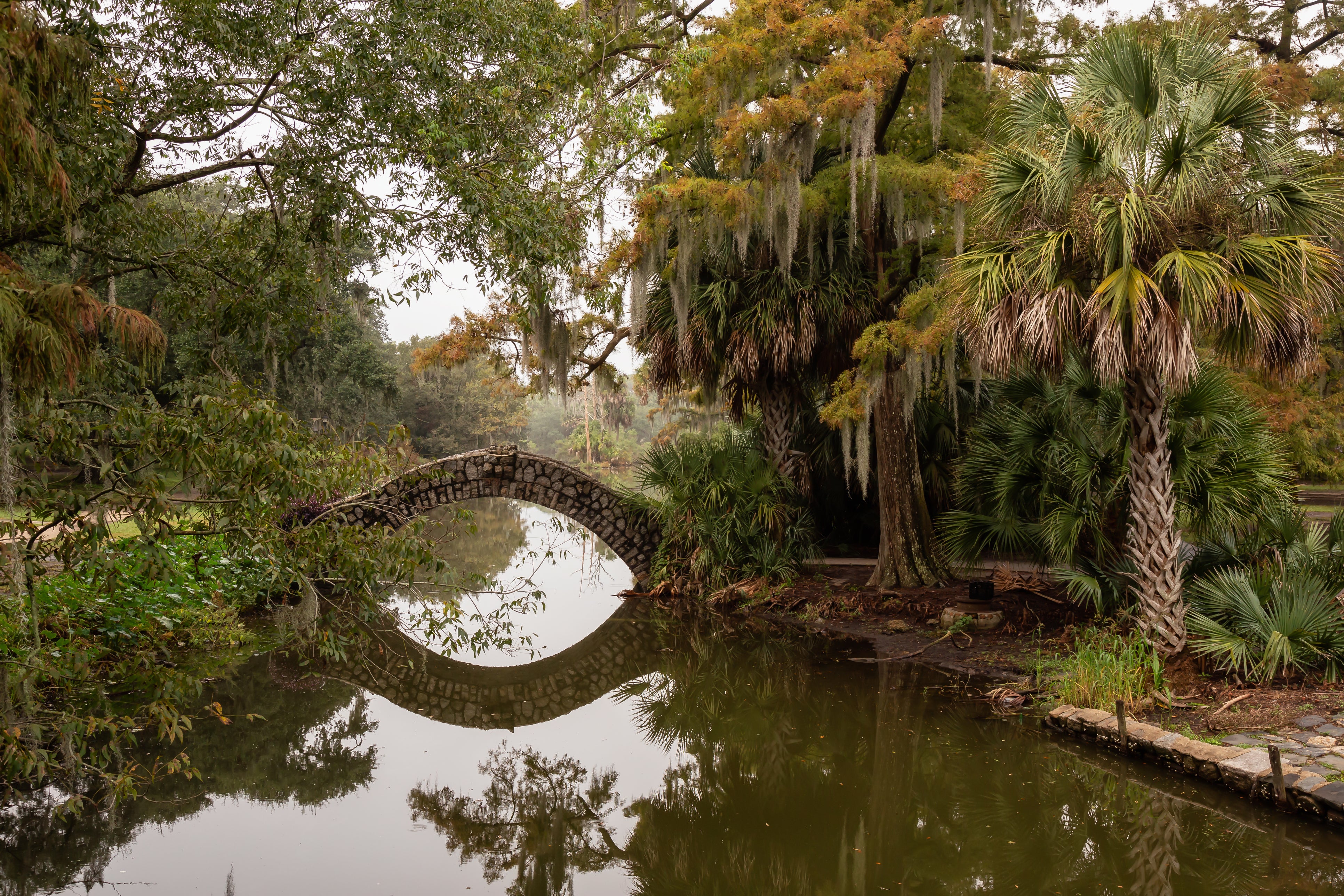
We arrived just in time for the Wednesday concert series in Lafayette Square, a free weekly festival of live music and food kiosks that immediately got us up to speed on how to enjoy the city, especially when we came across the urban oasis of City Park, the second largest park in the US after New York’s Central Park. Its mixture of botanical gardens, amusement parks, museums, sculpture gardens and dog parks was balm for the soul and a feast for the senses, especially when we happened upon the beignets.
Aah, the beignets! These little portions of fried dough delight are a local speciality dating back to French immigrants from the 1700s, and Café du Monde has been serving them since 1862. Now in locations throughout the city, they are as iconic as Mardi Gras and twice as delicious. City Park’s café lacked the crowds of the downtown venues, hence we sat and ingested with enormous relish.
Read more: How to do the perfect New York city break
While New Orleans beguiled with its cuisine, music and culture – including the renowned National WWII Museum, which brought us to tears with its section on the Holocaust, and Chalmette Battlefield, where the 1815 Battle of New Orleans effectively ended colonial claims on America – the rural areas south of the city caught us off guard. The painfully impoverished towns of the Mississippi River Delta were a reminder of a tragic past and uncertain future, with its historic high poverty levels now exacerbated by a succession of hurricanes that have left deep scars, along with the climate change forecast for more.
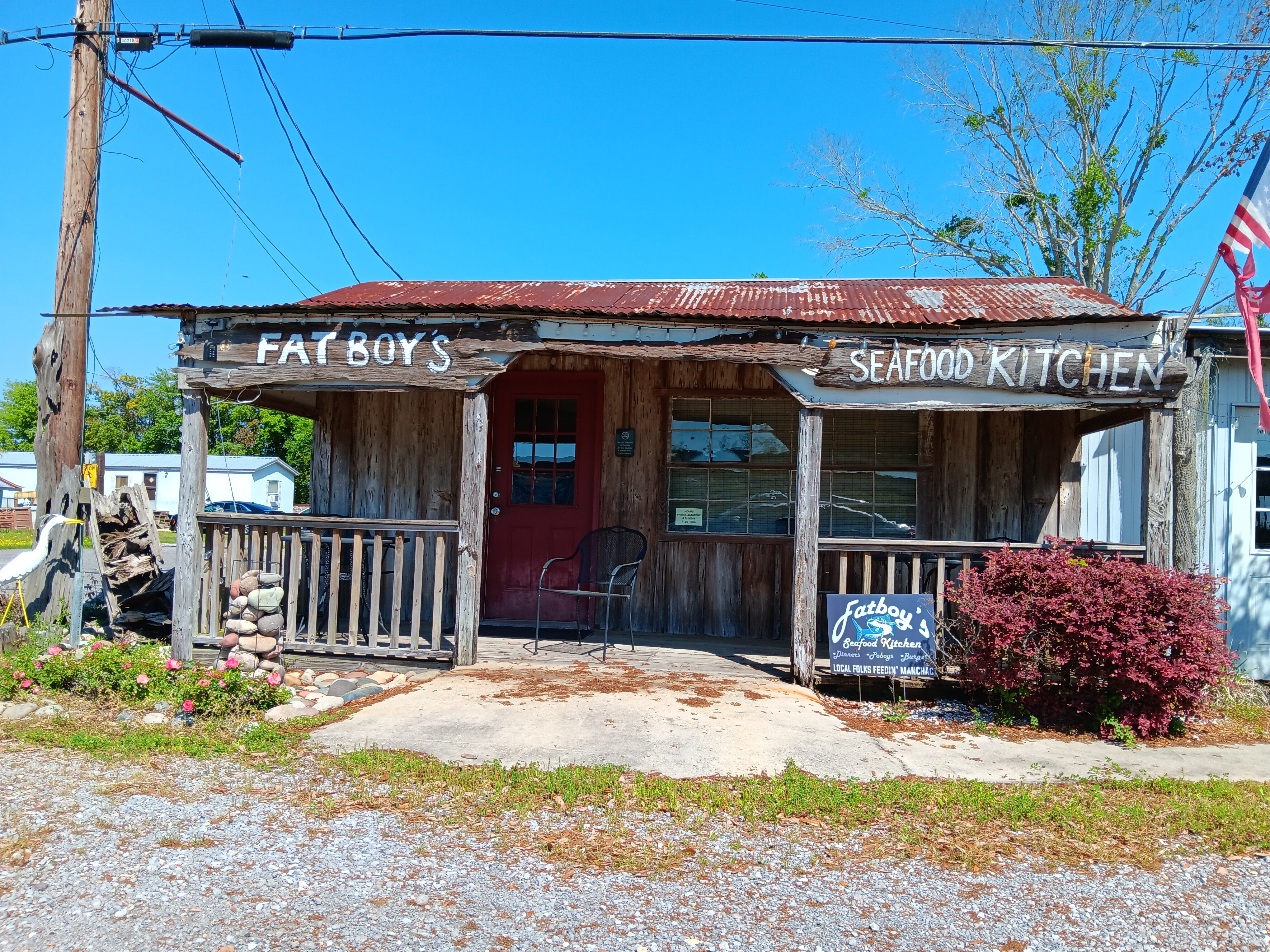
The state of Mississippi presented us with dazzling Gulf Coast real estate. As we pulled into Buccaneer State Park, another superbly equipped campground right on this captivating coast, we were aware of the beach just a few yards from our site, while the coast road disappeared to the east in a whispered promise of new discoveries.
Sure enough, we were right on Beach Boulevard Scenic Byway, a pristine 13-mile stretch of wooded seaside nirvana studded with two utterly charming towns in Waveland and Bay St Louis. While New Orleans grabbed all the tragic headlines of Hurricane Katrina in 2005, Waveland was actually ground zero for the monster storm, with only one building left standing on the high street thanks to a 30ft surge that pushed miles inland and left 57 dead (out of a population of 8,361). Amazingly, the rebuilding effort has created a new-town appearance with old-school sensibilities, and the Byway provided outstanding sight-seeing as well as blissful beaches and the eclectic Mockingbird Café, a survivor of Katrina and now a community focus for breakfast, lunch and heavenly coffees.
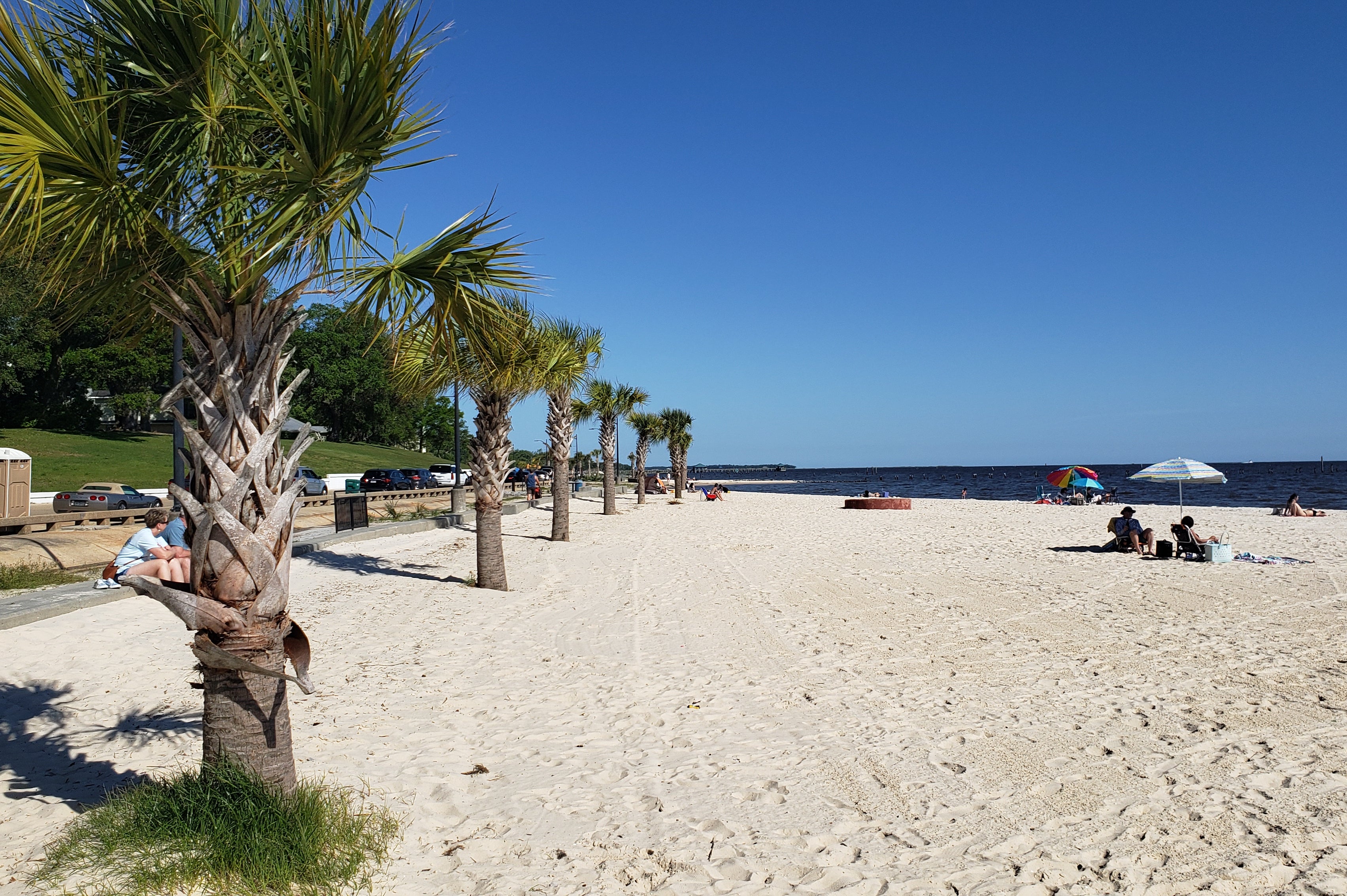
The coastal idyll continued as we took Highway 90 through Pass Christian, Long Beach and Gulfport to Biloxi Bay RV Resort, and another exercise in high-quality camping. With its own lazy river feature, swimming pool and bayfront bar, we were totally cosseted for another week, while also enjoying local highlights that included the eclectic arts community of Ocean Springs – packed with restaurants, art galleries and its own beachfront – and Biloxi itself, with more dining delights, as well as 26 miles of white sands that wouldn’t be out of place in the Caribbean.
In many ways, we had uncovered the essential Zen of RVing with a totally chilled state of road-going mind, but there was more in store as we considered the final month of our grand adventure through Alabama and back home to Orlando.
How to do it
RV Factfile:
‘111 Places in Orlando That You Must Not Miss’ by Simon Veness and Susan Veness is out now for £13.99.
Read more: US cities for solo female travellers you might not have considered

Louisiana
Louisiana Gov. Slammed For Arguably The Most Tone-Deaf Post You’ll Ever See Mere Hours After Terrorist Attack
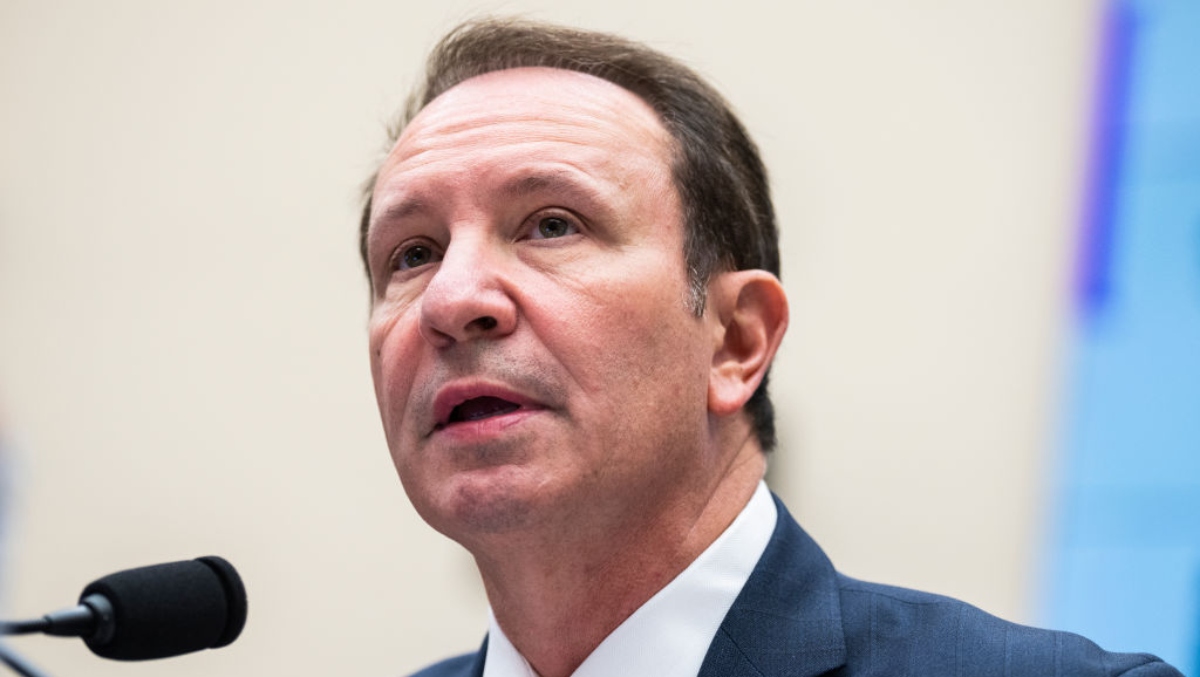
Tough one yesterday. Tough way to start a new year. No denying that. No hiding from it. No running from it.
What happened in New Orleans was disgusting. The videos are something out of a third-world country, not America. It’s infuriating. Everyone should be angry today. This crap shouldn’t happen in the US of A. But it did, and it was awful.
Now that that’s all outta the way, let’s check in with Louisiana Gov. Jeff Landry, who pumped out quite possibly the most tone-deaf tweet in the history of time last night as his state was still reeling from a literal terrorist attack mere hours earlier.
Strap in:
The people of New Orleans saw right through this one
Whoaaaaaaa Nellie! What a post. Incredible.
Now, couple things here …
1. I get it. I understand what the Gov. was trying to do here. It’s sort of like what my great Gov. would do down here in Florida after a hurricane. You still have an economy to support and people need to eat. You also have to send a message of strength. I get it all.
2. That being said, this was not some natural disaster. This was a terrorist attack in your state, right down the road from where you’re eating dinner and taking pictures. There were bodies lying in the street hours ago. Every single law enforcement agency in the country is in town right now.
Again, I get what the Gov. here was trying to convey, but … whoof. I just figured once he – or one of his social media interns – read the comments (which we will get to here in just a second) they would’ve immediately scrapped this post.
But nope. Here we are, hours later, and it’s still up and … thriving.
Well, thriving may not be the right word here. Let’s head to the comments section to see if we can pick out a better one:
Tone-deaf. That’s the one! Let’s go with “tone-deaf.”
Again, I get it. Life has to go back to normal … somewhat … in these situations. The American people need to see it resume, because this country is built on resiliency and never, ever bending the knee to terrorists.
But, maybe pump out a post like this … tonight? Give it 24 hours and then maybe go out to dinner downtown?
Oh well. What’s done is done.
Prime rib for all!
Louisiana
Louisiana resident speaks to FOX10 News about deadly New Orleans attacks

MOBILE, Ala. (WALA) – Shortly after 3 a.m. on Jan. 1, a time of celebration quickly turned into a night of tragedy and mourning after police say a truck plowed through a crowd on Bourbon and Canal Streets in New Orleans.
The FBI confirming 15 people were killed and over 30 others were injured.
The attacker,42-year-old Army Veteran from Texas Shamsud-Din Jabbar, had been deployed to Afghanistan.
Investigators said just days before the attack, Jabbar made videos that expressed a desire to kill.
One Louisiana resident Matt Baldwin was in New Orleans on Iberville Street in a private residence when everything unfolded.
Although he wasn’t aware of the heartbreaking incident until he woke up, he said he has military experience and heard a sound that he said was all too familiar. That’s when he knew something was wrong.
“I heard an explosion at about 9:15, 9:20 and we were told that it was them putting a charge on one of the devices that they think could’ve been an improvised explosive device,” Baldwin said. “I don’t know, just to be in the vicinity, 50 to 60 yards from a terrorist attack is, it’s crazy.”
Copyright 2025 WALA. All rights reserved.
Louisiana
Archbishop of New Orleans prays for victims of terrorist attack in Louisiana

Archbishop Gregory Aymond of New Orleans says the Church’s prayer are going out for the victims of a terrorist attack in his city in Louisiana.
A suspect named Shamsud-Din Jabbar drove a pick-up truck around barriers and went through a crowd of people celebrating the New Year early on Wednesday.
The attack occurred around 3.15 am on the intersection of Canal and Bourbon Streets in the French Quarter, an area popular with tourists.
At least 10 people were killed, and police found an Islamic State (ISIS) flag in the attacker’s vehicle.
“Our prayers go out to those killed and injured in this morning’s horrific attack on Bourbon Street,” Aymond said in a statement.
“This violent act is a sign of utter disrespect for human life. I join with others in the Roman Catholic Archdiocese of New Orleans in offering prayerful support to the victims’ families. I give thanks for the heroic duty of hundreds of law enforcement and medical personnel in the face of such evil,” the archbishop said.
Jabbar was killed in a police shootout after the attack. Two police officers were injured in the exchange.
“He was trying to run over as many people as he could. He was hell-bent on creating the carnage and damage that he did,” Anne Kirkpatrick, the New Orleans police chief, told journalists.
The FBI says Jabbar was probably not “solely responsible” and urged anyone with images of him recorded over the last few days to get in touch with the federal agency. Investigators have reviewed video showing three men and a woman placing an improvised explosive device in connection with the attack.
President Joe Biden says he has been “continually briefed” since the attack by federal law enforcement leadership and his homeland security team, including Secretary of Homeland Security Ali Mayorkas, Deputy Attorney General Lisa Monaco, White House Homeland Security Advisor Liz Sherwood-Randall, and the Mayor of New Orleans “regarding the horrific incident that occurred there overnight.”
“The FBI is taking the lead in the investigation and is investigating this incident as an act of terrorism,” he said.
“I am grateful for the brave and swift response of local law enforcement in preventing even greater death and injury. I have directed my team to ensure every resource is available as federal, state, and local law enforcement work assiduously to get to the bottom of what happened as quickly as possible and to ensure that there is no remaining threat of any kind,” Biden continued.
The president said he will continue to receive updates about the attack, and will have more to say as we further information comes out.
“In the meantime, my heart goes out to the victims and their families who were simply trying to celebrate the holiday. There is no justification for violence of any kind, and we will not tolerate any attack on any of our nation’s communities,” Biden said.
University of Notre Dame president Father Robert Dowd – whose college football team was scheduled to play in New Orleans on Jan. 1 – said the members of the university would participate in a Mass for the victims, after announcing the game would be delayed due to the terrorist attack.
“We deeply regret any disappointment this change in plans causes and appreciate your understanding given these terrible events,” he said on X.
-
/cdn.vox-cdn.com/uploads/chorus_asset/file/25672934/Metaphor_Key_Art_Horizontal.png)
/cdn.vox-cdn.com/uploads/chorus_asset/file/25672934/Metaphor_Key_Art_Horizontal.png) Technology1 week ago
Technology1 week agoThere’s a reason Metaphor: ReFantanzio’s battle music sounds as cool as it does
-

 News1 week ago
News1 week agoFrance’s new premier selects Eric Lombard as finance minister
-

 Business1 week ago
Business1 week agoOn a quest for global domination, Chinese EV makers are upending Thailand's auto industry
-

 Health5 days ago
Health5 days agoNew Year life lessons from country star: 'Never forget where you came from'
-
/cdn.vox-cdn.com/uploads/chorus_asset/file/24982514/Quest_3_dock.jpg)
/cdn.vox-cdn.com/uploads/chorus_asset/file/24982514/Quest_3_dock.jpg) Technology5 days ago
Technology5 days agoMeta’s ‘software update issue’ has been breaking Quest headsets for weeks
-

 World1 week ago
World1 week agoPassenger plane crashes in Kazakhstan: Emergencies ministry
-

 Politics1 week ago
Politics1 week agoIt's official: Biden signs new law, designates bald eagle as 'national bird'
-

 Politics6 days ago
Politics6 days ago'Politics is bad for business.' Why Disney's Bob Iger is trying to avoid hot buttons











